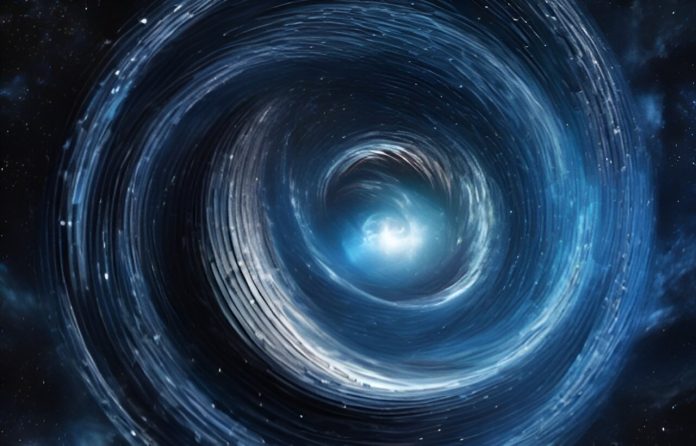
Imagine a spaceship that doesn’t use engines but moves by compressing spacetime in front of it. This idea, often seen in science fiction, is called a “warp drive.”
While it sounds like pure fantasy, scientists have been exploring the theoretical possibility of warp drives for decades.
A recent study, published in the Open Journal of Astrophysics, has taken this a step further by simulating the gravitational waves that a failing warp drive might emit.
Warp drives, in theory, could make spaceships travel faster than light. However, there are significant hurdles to building one, such as the need for a special kind of matter with negative energy.
Other problems include potential time paradoxes and the practical challenges of controlling and stopping the warp bubble around the spaceship.
This new study was a collaboration among experts in gravitational physics from Queen Mary University of London, the University of Potsdam, the Max Planck Institute for Gravitational Physics in Potsdam, and Cardiff University.
Although the researchers haven’t figured out how to build a warp drive, they have explored what might happen if one broke down using computer simulations.
Dr. Katy Clough, the lead author from Queen Mary University of London, explains, “Even though warp drives are just theoretical, they are described by Einstein’s theory of General Relativity. This allows us to use simulations to see how they might affect spacetime, creating gravitational waves.”
Dr. Sebastian Khan from Cardiff University adds, “Miguel Alcubierre created the first warp drive concept in 1994 during his Ph.D. at Cardiff University. It’s fitting that we continue exploring warp drive ideas in the era of gravitational wave astronomy.”
The study found that a collapsing warp drive would produce a unique burst of gravitational waves—a ripple in spacetime that current gravitational wave detectors, which typically look for black hole and neutron star mergers, might not detect. These waves would be short and high-frequency, requiring future detectors designed for such signals.
Although no such detectors have been built yet, the technology exists. This raises the possibility of searching for signs of warp drive technology, even if we can’t build one ourselves. Dr. Khan warns that their study is speculative, and more research is needed before developing new detectors.
The researchers also looked at the energy dynamics of a collapsing warp drive. It emits a wave of negative energy matter followed by alternating positive and negative waves, resulting in a net increase in the system’s energy. This could provide another clue if the waves interact with normal matter.
This study expands our understanding of exotic spacetimes and gravitational waves. Prof. Dietrich notes, “The most exciting part is modeling the dynamics of negative energy spacetimes accurately. This could help us understand the universe’s evolution and black hole singularities better.”
Dr. Clough concludes, “Theoretical ideas push us to explore the universe in new ways. Even though we might not see anything soon, it’s worth investigating.”
The team plans to study different warp drive models and the collapse of faster-than-light bubbles. While warp speed is still far off, the quest to uncover the universe’s secrets continues, one simulated crash at a time.



